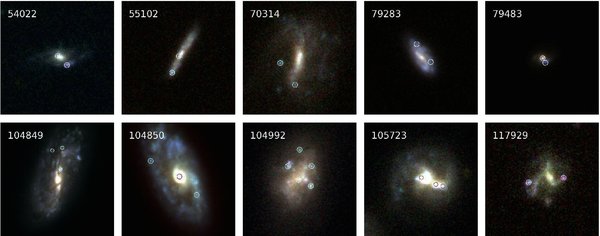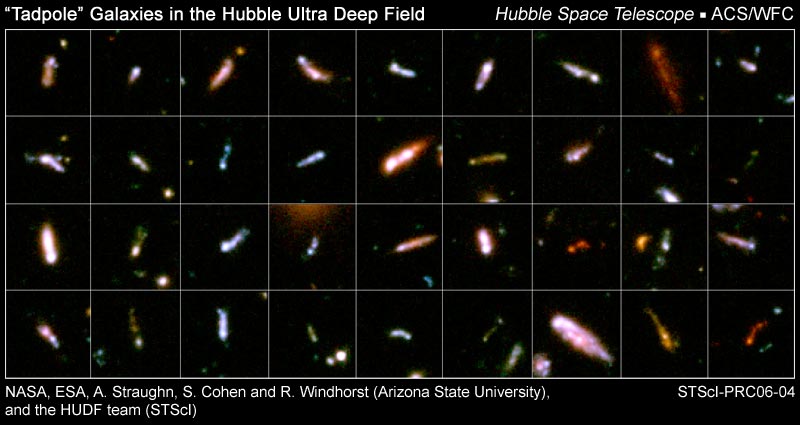My research focuses on the star-forming and structural properties of intermediate redshift galaxies, near the peak of cosmic star formation (approximately 1<z<3). Most recently, I have been using near-infrared grism spectroscopic data from the Hubble Space Telescope’s (HST) Wide Field Camera 3 (WFC3), installed in Servicing Mission 4 in 2009. This paper, published in 2011, describes some of the first results from this new instrument; namely, the remarkable efficiency of WFC3 in obtaining low-resolution infrared spectra of star-forming emission-line galaxies in this important cosmic epoch.
Prior to my work with HST WFC3 grism data, I also worked on mostly lower-redshift (z<2) emission-line galaxies using HST’s Advanced Camera for Surveys (ACS) grism data. Using the GRAPES and PEARS grism surveys, we were able to create several redshift catalogs of galaxies in the Hubble Ultra Deep Field (HUDF) and the surrounding Great Observatories Origins Deep Survey South (GOODS-S) field, and to study the star-forming properties
of these galaxies using this data.
In addition to spectroscopic work, my first publication as a graduate student was a study of ‘tadpole galaxies’ in the HUDF. In this study, we systematically selected faint galaxies with distinct ‘knot plus tail’ morphologies, and studied their properties as a function of redshift. In a partner variability study, we found that none of the tadpole galaxies–which we determine might be in a mid-stage merger–were variable, indicating the lack of an actively feeding black hole in these galaxies. These observations were consistent with numerical simulations that suggest that one would expect to see active galactic nuclei activity only much later in the merger sequence–after the galaxy would be seen as morphologically disturbed. This paper was featured in a Hubble press release, found here.
I am also a member of the CANDELS team, where I’m part of the grism science and morphology working groups.
My CV is here, and a full list of ADS publications can be found here.



